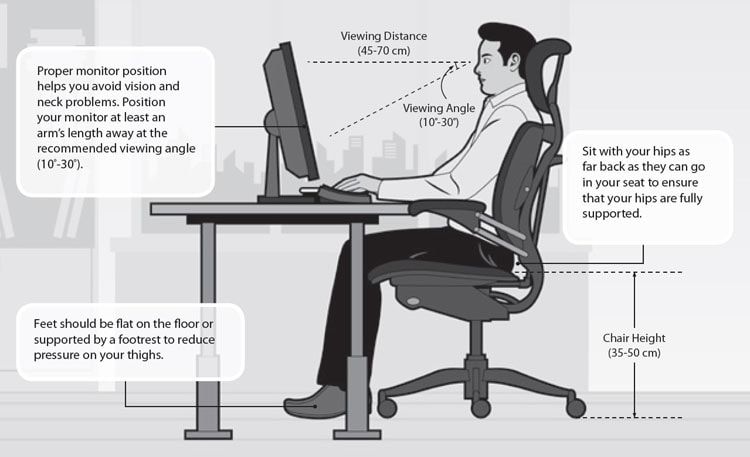Creating an ergonomic workspace is vital for our overall well-being, comfort, and productivity. Spending long hours at a workstation that is poorly designed can lead to numerous health issues, including repetitive strain injuries, back pain, and eye strain. In this article, we will explore the importance of an ergonomic workspace and provide tips for setting up a comfortable and healthy work environment.
The Significance of Ergonomics
Ergonomics is the science of designing and arranging our workspaces to fit our bodies and capabilities. When we adopt ergonomic principles, we minimize the risk of physical strain and discomfort by ensuring that our bodies are properly supported and that we can work in a more natural and efficient manner.
The Desk
Start by choosing a desk that is suited to your needs. Ideally, it should be adjustable in height so that you can sit or stand depending on your preference. The desk should provide ample space for your work materials and computer equipment, allowing you to keep everything in reach without the need for excessive stretching or bending. Additionally, ensure that the desk is sturdy and stable to avoid any accidents or injuries.
The Chair
A comfortable and supportive chair is crucial for maintaining good posture and preventing back pain. Look for a chair that offers adjustable height, lumbar support, and padding. The chair should allow your feet to rest flat on the floor and provide adequate support for your lower back. Remember to adjust the chair’s height so that your thighs are parallel to the ground and your arms comfortably rest on the desk.
Proper Monitor Placement
Your computer monitor’s position plays a significant role in preventing eye strain and neck pain. Position the monitor directly in front of you at eye level, approximately an arm’s length away. Adjust the screen’s brightness and contrast to reduce glare, and place it in a location that minimizes reflections from external light sources. Consider using a monitor stand or an adjustable arm to achieve the optimal viewing angle.
Ergonomic Keyboard and Mouse
An ergonomic keyboard and mouse can greatly reduce hand and wrist strain. Look for keyboards and mice that are designed to promote a more natural hand and wrist position, with features such as split key layouts and vertical mice. These ergonomic devices can help prevent repetitive strain injuries like carpal tunnel syndrome and tendonitis.
Lighting
Appropriate lighting is essential to minimize eye fatigue and headaches. Ensure that your workspace is well-lit, with a mix of natural and artificial lighting. Avoid positioning your desk directly under harsh overhead lights, as they can cause glare and discomfort. Consider using a desk lamp with adjustable brightness and position it to illuminate your work area effectively.
Organizational Systems
A cluttered workspace can hinder productivity and increase stress levels. Establish an organizational system that keeps your essential items easily accessible and eliminates unnecessary clutter. Invest in desk organizers, shelving units, and filing cabinets to keep your workspace tidy and create a more efficient workflow.
Regular Breaks and Movement
Regardless of how well-designed your workspace is, sitting for prolonged periods can still lead to health problems. Take regular breaks and make a conscious effort to incorporate movement into your day. Stretch, take short walks, or perform simple exercises to prevent muscle stiffness and promote blood circulation.
Conclusion
Designing an ergonomic workspace is crucial for maintaining our health and well-being during long hours of work. By investing in the right furniture and equipment, paying attention to proper positioning, and incorporating regular movement breaks, we can create a comfortable and healthy workspace that promotes productivity and reduces the risk of discomfort and injuries. Remember, your body deserves the utmost care, even during work hours.


